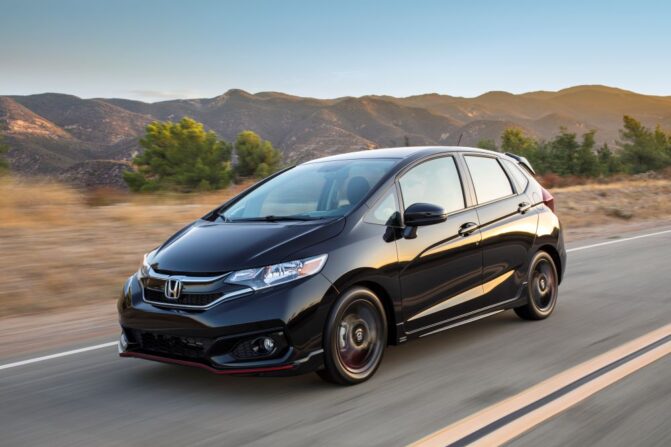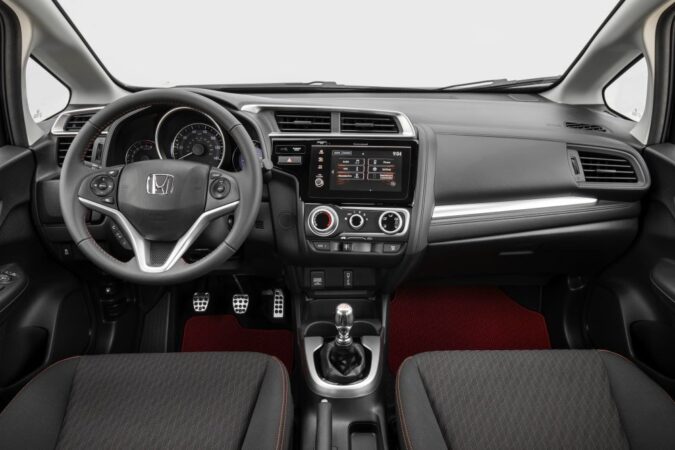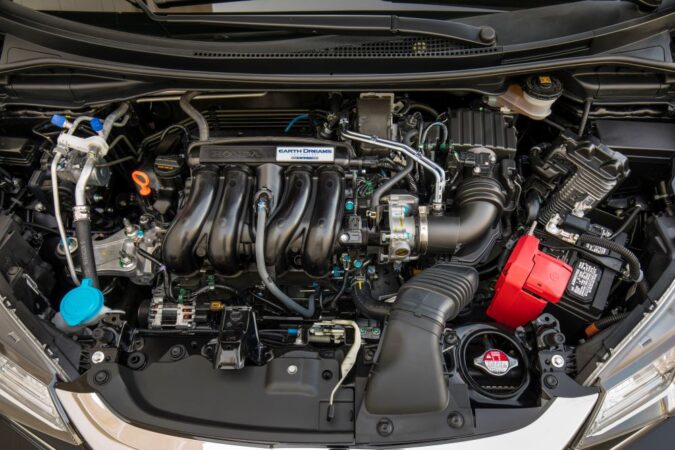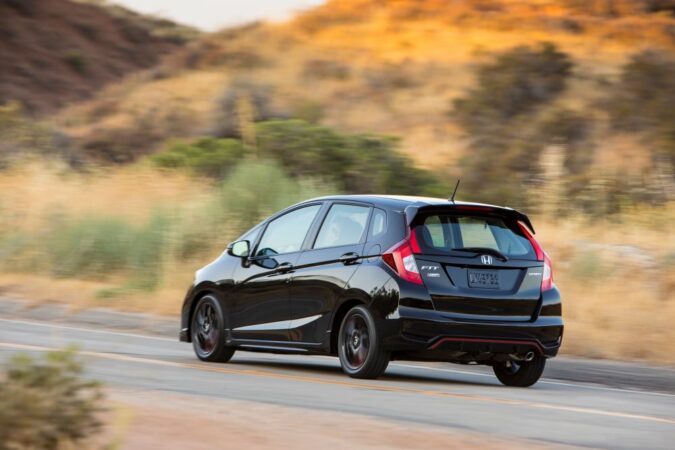What is the best year for Honda Fit? It is a question on the minds of several people in the market to buy one. It’s always been an industry favorite. The Honda Fit is a well-known compact car that has been a favorite among drivers for many years. Its amazing design and exceptional fuel efficiency have made it a top choice for those seeking a reliable and cheap vehicle.
While every year of production has its own unique features and benefits. There are some years that stand out as the best for the Honda Fit. Recently, Honda made significant improvements and upgrades that took the Fit to the next level in terms of performance, comfort, and convenience.
From its advanced safety features to its spacious and comfortable interior, this particular year of the Honda Fit has earned its place as the ultimate choice for those seeking a reliable, efficient, and stylish compact car. Let’s take a closer look at what makes this year of the Honda Fit so special and why it’s the best year for this popular vehicle.
- Honda Fit Gas Mileage
- Honda Fit Discontinued
- Best Honda Engine
- Honda Fit Engine
- Best Year For Honda Fit
- Honda Fit Safety Rating
- Conclusion
- Frequently Asked Questions
Honda Fit Gas Mileage
The Honda Fit has consistently ranked high in terms of fuel efficiency, earning it a reputation as one of the most economical cars on the road. In fact, the Fit has been recognized by the Environmental Protection Agency (EPA) as a “Green Vehicle”. This is thanks to its low emissions and high gas mileage – and it’s among the best gas mileage used cars under 10k.
Its fuel efficiency is due to several factors, including its lightweight design, aerodynamic shape, and efficient engine. Many Honda Fit models come equipped with a 1.5-liter four-cylinder engine that delivers both power and efficiency, with an output of up to 130 horsepower and up to 114 pound-feet of torque.
Additionally, the brand has incorporated several advanced technologies into the Fit’s engine, such as direct injection and variable valve timing, which help to further boost fuel efficiency. Certain features are designed in the Honda Fit to help conserve fuel and optimize its gas mileage. Thus, ensuring that it can attain what is considered to be good gas mileage.
For example, some models include Eco Assist, which adjusts engine and transmission performance to maximize efficiency. There’s also an ECON mode that can be activated with the push of a button to help reduce fuel consumption even further. This is basically Honda’s version of your typical eco mode.
Honda Fit Discontinued
Unfortunately, Honda announced that the Honda Fit would be discontinued in the United States after the 2020 model year. This decision was made in response to shifting consumer preferences towards SUVs and crossovers, which have become popular in recent years.
While the Honda Fit has been a popular and beloved car for many years, the decision to discontinue it was likely based on several factors. The Fit had faced increased competition from other small cars and subcompact SUVs in recent years, and sales had been declining. Hence, it’s the reason why many car buyers are comparing the Honda Fit vs the Toyota Yaris.
However, it’s worth noting that it’s still available in other markets around the world, including in Japan and Europe. In these markets, the Fit is known as the Honda Jazz, and it continues to be a popular choice among drivers.
Despite its discontinuation in the US, the Honda Fit remains a well-regarded car that offers impressive fuel efficiency, a spacious and versatile interior, and fun-to-drive handling. For those in the US who are still interested in purchasing one, there are still many used models available on the market.
Best Honda Engine
Honda is renowned for its impressive engineering and has built a reputation for producing reliable and efficient engines. From small cars to sports cars, their engines have consistently delivered impressive performance and fuel efficiency over the years. Their engines are known for their high-revving power delivery, smooth acceleration, and excellent reliability.
Honda’s innovative technologies, such as VTEC (Variable Valve Timing and Lift Electronic Control), have been a game-changer in the automotive industry. This technology allows engines to produce more power at high RPMs, while still delivering excellent fuel efficiency at low RPMs.
This unique feature has made Honda engines a popular choice for drivers who want a balance of power and efficiency – just like the aftermarket Spoon engine for a Honda. For more insight, check out our guide on what is VTEC and how does it all work.
K20C1 Engine
The K20C1 engine is a turbocharged 2.0-liter four-cylinder engine that is found in the Honda Civic Type R. This engine is one of the most powerful Honda engines ever produced, delivering an impressive 306 horsepower and 295 pound-feet of torque.
It features advanced technologies like direct injection and VTEC variable valve timing, which help to optimize performance and fuel efficiency. The K20C1 engine is designed to provide a thrilling driving experience, with its turbocharger delivering quick acceleration and impressive power delivery across the rev range.
The engine’s VTEC system allows it to produce more power at high RPMs, while also maintaining excellent fuel efficiency at lower RPMs.
F20C engine
The F20C engine is a high-revving 2.0-liter four-cylinder engine that was found in the Honda S2000. It delivers an impressive 240 horsepower and 153 pound-feet of torque, thanks to advanced technologies like a drive-by-wire throttle and VTEC variable valve timing.
The F20C engine is known for its smooth power delivery and excellent handling characteristics, which made the Honda S2000 a favorite among driving enthusiasts. This engine is capable of revving up to 9,000 RPMs, which is a testament to its excellent engineering and precision manufacturing.
One of the unique features of the F20C engine is its drive-by-wire throttle system. This system eliminates the need for a mechanical connection between the accelerator pedal and the engine’s throttle body, which allows for more precise control and faster response times.
Honda Fit Engine
The Honda Fit is powered by a range of engines, depending on the model and year of the vehicle. One of the most common engines found in the Honda Fit is a 1.5-liter four-cylinder engine. This Honda engine produces 130 horsepower and 114 pound-feet of torque.
This engine features advanced technologies like direct injection and i-VTEC (intelligent Variable Valve Timing and Lift Electronic Control). This is what helps the car to optimize performance and fuel efficiency.
Another engine option for the Honda Fit is the hybrid powertrain. This hybrid engine is paired with a 1.5-liter four-cylinder engine with an electric motor. This hybrid powertrain delivers an impressive 151 horsepower and 197 pound-feet of torque, while also providing excellent fuel efficiency.
Honda has a reputation for producing reliable and durable engines (with rare exceptions such as the Honda 1.5 turbo engine problems), and the engines found in the Honda Fit are no exception. With proper maintenance, these engines are capable of delivering years of trouble-free performance.
Overall, the engines found in the Honda Fit are designed to provide a balance of performance and fuel efficiency. From the efficient hybrid powertrain to the powerful yet fuel-efficient 1.5-liter engine, Honda has engineered these engines to deliver a satisfying driving experience while also being kind to the environment.
Best Year For Honda Fit
The Honda Fit has been a popular choice for subcompact car buyers since its introduction in 2001. While every model year has its own unique features and improvements, there are a few standout years that are widely considered to be the best year for Honda Fit.
2017
The 2017 Honda Fit takes the top spot on the list of the best Honda Fit models. This is thanks to its impressive cargo space, smooth ride, speedy acceleration, and outstanding reliability.
This subcompact car is an excellent choice for those seeking a five-seater with a hatchback design. Honda offers both manual and automatic transmission options across three different trims. The 2017 Fit also boasts several premium features as standard, such as a backup camera, Bluetooth audio streaming, and the innovative folding rear seat.
Compared to its 2015 predecessor, the 2017 Fit underwent some crucial improvements, addressing previous issues and enhancing overall performance. The car’s primary focus is on providing a comfortable and convenient ride, making it an ideal family car.
Overall, the 2017 Honda Fit stands out among its peers as a reliable, practical, and fun-to-drive subcompact car that meets the needs of modern drivers. That is why it takes the top spot in the best year for Honda Fit.
2019
Honda stayed true to its “if it ain’t broke, don’t fix it” philosophy with the 2019 Honda Fit. They only made some minor changes from the previous 2017 model. Nevertheless, it remains a versatile subcompact car with a hatchback design that offers ample cargo space despite its small size. This makes the car super easy to maneuver in tight spaces.
Although the car received few upgrades, the new trim added some impressive active safety features, such as collision mitigation braking and lane departure warning. These features further enhance the overall safety of the vehicle.
While the 2019 Fit may not have introduced any significant changes, it remains a solid contender in the subcompact car market. It has earned its place in the list of the best Honda Fit models. With its practicality, maneuverability, and safety features, the 2019 Honda Fit is an excellent choice for those seeking a reliable and versatile car.
That is why it takes the second spot in the best year for Honda Fit.
2014
The 2014 Honda Fit was a popular subcompact car that offered drivers a combination of affordability, fuel efficiency, and practicality. This model year saw a few updates and improvements over previous years. This includes a revised front grille and bumper, new wheel designs, and new exterior color options.
As the second model of the third generation, the 2014 Honda Fit has a sleek exterior design and a premium interior. Alongside that it comes with impressive driving performance, earning it a spot among the top Honda Fit models.
The 2014 Fit retained the compact yet spacious design of its predecessors. It still has the trademark folding rear seats providing ample cargo space. The exterior received a fresh redesign in 2013, further enhancing the car’s aesthetics.
While some minor drawbacks were noted, the 2014 Fit continues to be highly regarded for its practicality, style, and fuel efficiency, earning the admiration of many satisfied customers. Overall, the 2014 Honda Fit is a reliable and economical choice for those in search of a subcompact car that delivers on both performance and practicality. The year 2014 is one of the best years for Honda Fit.
2002
Ranked fourth on our list is the 2002 Honda Fit. This was one of the oldest and first models in the lineup. It played a crucial role in bringing the series into the spotlight and increasing its popularity.
This five-seater hatchback offered ample ground clearance and an impressive cargo capacity, making it an ideal vehicle for families. Equipped with a dependable FWD system and a speedy auto CVT gearbox, the Fit provided a comfortable and enjoyable driving experience. Just be mindful of the Honda CVT reliability.
One of the standout features of the 2002 Fit was its exceptional handling and road-holding capabilities. This also contributed to its place on this list. Despite being an older model, the 2002 Fit remains a solid choice for anyone seeking a reliable and practical car that offers ample cargo space and a comfortable ride.
Honda Fit Safety Rating
The Honda Fit has a strong reputation for safety. This is reflected in the vehicle’s high safety ratings from reputable organizations. The National Highway Traffic Safety Administration (NHTSA) has consistently awarded the Honda Fit a 5-star overall safety rating.
On the other hand, the Insurance Institute for Highway Safety (IIHS) has given the Fit its highest safety rating, the Top Safety Pick. Safety features on the Honda Fit typically include advanced airbags, antilock brakes, stability control, and a backup camera.
Many newer models also offer driver assistance technologies such as lane departure warning, forward collision warning, and automatic emergency braking. If you’re considering purchasing a Honda Fit, it’s important to research the specific year and model.
This will help you to ensure that it has the safety features and ratings that are important to you. Overall, the Honda Fit has a strong reputation for safety and is a great option. Especially for those who prioritize safety in their vehicle choice.
Conclusion
In conclusion, the Honda Fit has been a reliable and popular choice for drivers seeking a versatile and efficient vehicle. While there have been many great years for the Fit, the 2017 model stands out. They are considered the best option due to their impressive cargo storage, exceptional ride quality, and lack of significant issues.
The 2019 model is also a solid choice, as it offers many of the same features and benefits. It is as good as the 2017 model but with added safety features. The 2014 model is another noteworthy option, with a premium interior, fresh exterior design, and good driving performance.
As said before, the Honda Fit has consistently provided drivers with a comfortable and convenient ride. It also comes with plenty of cargo space and fuel efficiency. When considering a used Honda Fit, it is important to check for any potential issues and to prioritize models with good safety ratings.
Frequently Asked Questions
Here are some of the common questions people have relating to the best year for Honda Fit.
Is The Honda Fit A Good Car
Yes, the Honda Fit is generally considered a good car. It is a versatile and practical subcompact car that offers excellent fuel efficiency. Alongside that, it has a spacious cargo area and a comfortable ride. The Fit is also well-known for its reliability and durability. This makes it a popular choice for those seeking a long-lasting and low-maintenance vehicle. In addition, the Honda Fit has received numerous accolades over the years. This is including being named one of Car and Driver’s 10 best cars and a Top Safety Pick by the Insurance Institute for Highway Safety (IIHS). The car also receives high ratings and positive reviews from both automotive experts and owners alike. However, like any car, the Honda Fit may not be the perfect fit for everyone. Some drivers may prefer larger vehicles or more powerful engines, while others may find the interior space to be too cramped.
Is Honda Fit A Hybrid
Yes, Honda offers a hybrid version of the Fit known as the Honda Fit Hybrid. However, it’s important to note that the Fit Hybrid is not available in all markets. It is primarily sold in Japan and some European and Asian countries. The Fit Hybrid combines a 1.5-liter engine with an electric motor to provide improved fuel efficiency. This makes it a popular choice for drivers looking for a more environmentally-friendly option. It’s also worth noting that while the Fit Hybrid is not available in all markets, Honda does offer other hybrid models such as the Insight, Accord Hybrid, and Clarity Plug-In Hybrid that may be available in your region.
How Long Do Honda Fit Last
Honda Fits are known for their reliability and durability, and with proper maintenance, they can last for many years. On average, a Honda Fit can last up to 200,000 miles or more if it is well taken care of. Regular maintenance such as oil changes, brake pad replacements, and tire rotations can go a long way. It helps in ensuring that your Honda Fit remains in good condition for many years. Additionally, following the recommended maintenance schedule outlined in the owner’s manual can help prevent major problems down the road. It’s worth noting that the lifespan of any car can vary based on factors such as driving habits, climate, and maintenance history. However, Honda has a reputation for building long-lasting vehicles, and the Honda Fit is no exception. With proper care and maintenance, a Honda Fit can provide reliable transportation for many years to come.
Are Honda Fits Reliable
Yes, Honda Fits are generally considered reliable cars. Honda has a reputation for producing vehicles that are well-engineered, durable, and dependable, and the Fit is no exception. The car has consistently scored high in reliability ratings by reputable sources such as Consumer Reports and J.D. Power. One of the key factors contributing to the Fit’s reliability is its well-designed and efficient engine. The car’s compact size also makes it more agile and easier to handle, reducing the likelihood of accidents or damage. However, as with any car, proper maintenance and regular servicing play a significant role in ensuring its longevity and reliability. It is recommended to follow the manufacturer’s recommended maintenance schedule and take care of any issues as soon as they arise.
What Year Did Honda Fit Come Out
The Honda Fit, also known as the Jazz in some markets, first came out in 2001. On the other hand, the fit came as a 2002 model year in Japan. It was then introduced to other markets such as Europe, Australia, and North America in subsequent years. The first generation of the Fit was produced from 2001 to 2008. Followed by the second generation from 2008 to 2014, and the third generation from 2014 to 2020. The Fit was redesigned for the 2021 model year, but unfortunately, Honda announced that it will no longer be sold in the United States due to declining sales. However, the Fit will continue to be sold in other markets around the world.
Are Honda Fits Safe
Yes, Honda Fits are generally considered safe cars. The National Highway Traffic Safety Administration (NHTSA) has given high safety ratings in various categories. This also includes an overall rating of 5 out of 5 stars for the 2020 model year. The Insurance Institute for Highway Safety (IIHS) also named the 2021 Honda Fit as a Top Safety Pick. This is because they received the highest rating of Good in all crash tests and Superior for front crash prevention. Additionally, Honda has equipped their newer models with various safety features such as adaptive cruise control, lane departure warning, and forward collision warning. These features have helped the Fit maintain its reputation as a safe and reliable car.
How Long Is A Honda Fit
The Honda Fit is a small car that is about 13 to 14 feet long. It’s not very big, but it’s designed to be spacious and practical on the inside. The car has been around since 2001 and has a reputation for being reliable and safe. Honda has made sure to include many safety features in their cars, including the Fit. The car has a good safety rating and comes with airbags, a backup camera, and other features to help keep the driver and passengers safe in case of an accident. The Honda Fit is a good choice for people who want a small, practical car that is easy to drive and park.




